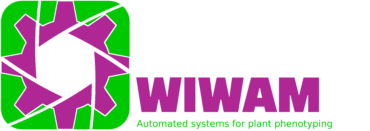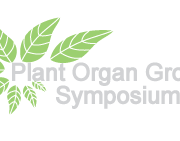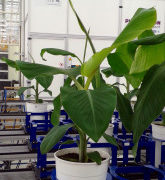Archive for year: 2016
You are here: Home / / 2016
https://www.wiwam.be/wp-content/uploads/common/WIWAM-brand-logo-HQ-e1536312465362.png
0
0
Stijn Dhondt
https://www.wiwam.be/wp-content/uploads/common/WIWAM-brand-logo-HQ-e1536312465362.png
Stijn Dhondt2016-10-17 14:05:392017-06-30 15:52:59Scientific publication in Nature Biotech including WIWAM xy
https://www.wiwam.be/wp-content/uploads/common/WIWAM-brand-logo-HQ-e1536312465362.png
0
0
Stijn Dhondt
https://www.wiwam.be/wp-content/uploads/common/WIWAM-brand-logo-HQ-e1536312465362.png
Stijn Dhondt2016-10-17 14:03:352017-06-30 14:47:36Optimization of the WIWAM xy design and installation @ VIB
https://www.wiwam.be/wp-content/uploads/common/WIWAM-brand-logo-HQ-e1536312465362.png
0
0
Stijn Dhondt
https://www.wiwam.be/wp-content/uploads/common/WIWAM-brand-logo-HQ-e1536312465362.png
Stijn Dhondt2016-10-17 13:56:012017-06-30 14:47:51WIWAM line design and final installation @ VIB
https://www.wiwam.be/wp-content/uploads/common/WIWAM-brand-logo-HQ-e1536312465362.png
0
0
Stijn Dhondt
https://www.wiwam.be/wp-content/uploads/common/WIWAM-brand-logo-HQ-e1536312465362.png
Stijn Dhondt2016-10-17 13:53:282017-06-30 14:48:15Collaboration agreement between SMO and VIB
https://www.wiwam.be/wp-content/uploads/common/Specim_company_logo-300x157.png
157
300
Stijn Dhondt
https://www.wiwam.be/wp-content/uploads/common/WIWAM-brand-logo-HQ-e1536312465362.png
Stijn Dhondt2016-10-17 13:48:192017-06-30 14:56:57SPECIM: a reliable partner for hyperspectral imaging
https://www.wiwam.be/wp-content/uploads/common/Biopute-logo-2-300x64.png
64
300
Stijn Dhondt
https://www.wiwam.be/wp-content/uploads/common/WIWAM-brand-logo-HQ-e1536312465362.png
Stijn Dhondt2016-10-17 12:37:162017-06-30 14:56:18Biopute: an official WIWAM dealer in China
https://www.wiwam.be/wp-content/uploads/common/WIWAM-brand-logo-HQ-e1536312465362.png
0
0
Stijn Dhondt
https://www.wiwam.be/wp-content/uploads/common/WIWAM-brand-logo-HQ-e1536312465362.png
Stijn Dhondt2016-10-17 12:35:272017-06-30 14:56:36Official opening WIWAM Conveyor setup @ VIB
https://www.wiwam.be/wp-content/uploads/common/Cereal-Future-Forum-300x104.jpg
104
300
Stijn Dhondt
https://www.wiwam.be/wp-content/uploads/common/WIWAM-brand-logo-HQ-e1536312465362.png
Stijn Dhondt2016-10-17 12:32:412017-06-30 14:56:41WIWAM Conveyor was presented at the “Cereal Future Forum”
https://www.wiwam.be/wp-content/uploads/common/POGlogo2.png
141
281
Stijn Dhondt
https://www.wiwam.be/wp-content/uploads/common/WIWAM-brand-logo-HQ-e1536312465362.png
Stijn Dhondt2016-10-17 12:23:262017-06-30 14:54:29WIWAM @ Plant Organ Growth Symposium
https://www.wiwam.be/wp-content/uploads/common/banana-phenotyping-165x300.jpg
300
165
Stijn Dhondt
https://www.wiwam.be/wp-content/uploads/common/WIWAM-brand-logo-HQ-e1536312465362.png
Stijn Dhondt2016-10-17 12:21:382017-06-30 14:54:40Banana and strawberry plants on WIWAM Conveyor
Scroll to top







